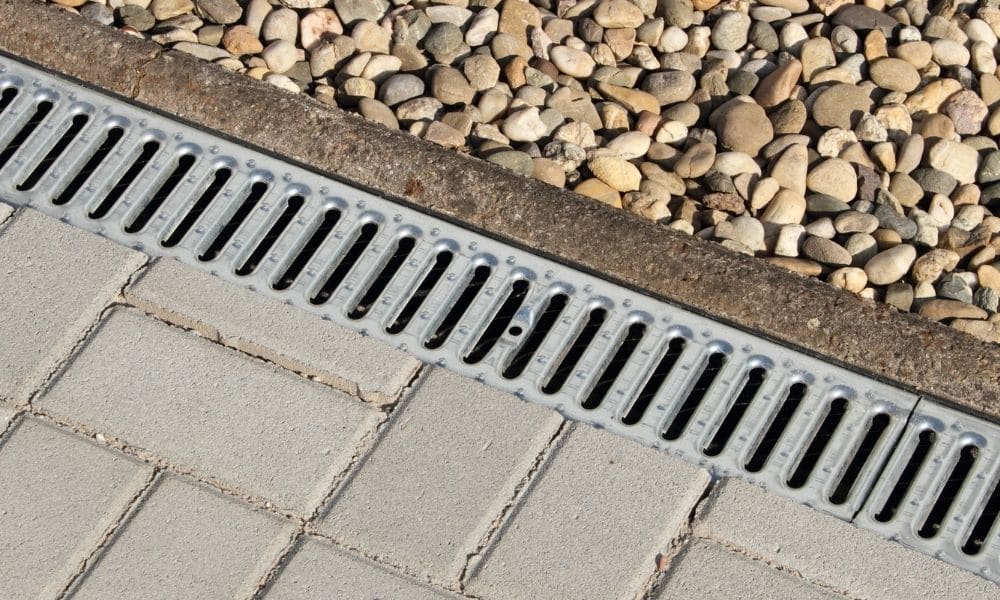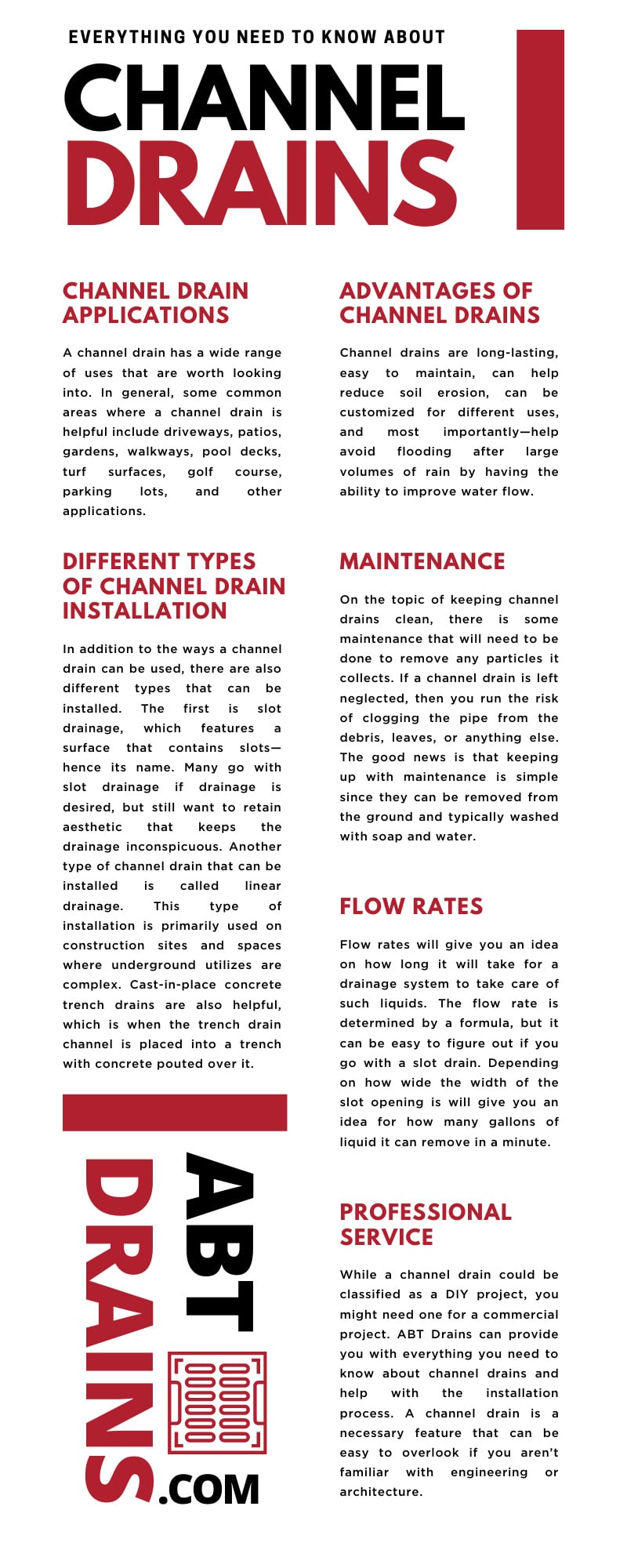
There are a multitude of drainage systems available, each serving a different purpose. A channel drain is among the most common types of drainage systems used and is a service ABT Drains provides for both commercial and residential needs. If you are unfamiliar with this system, continue reading to learn everything you need to know about channel drains before you make the call on what you need for your project.
Channel Drain Applications
A channel drain has a wide range of uses that are worth looking into. In general, some common areas where a channel drain is helpful include driveways, patios, gardens, walkways, pool decks, turf surfaces, golf course, parking lots, and other applications. If you have a space that can become flooded, a channel drain is something that you should have installed.
Different Types of Channel Drain Installation
In addition to the ways a channel drain can be used, there are also different types that can be installed. The first is slot drainage, which features a surface that contains slots—hence its name. Many go with slot drainage if drainage is desired, but still want to retain aesthetic that keeps the drainage inconspicuous.
Another type of channel drain that can be installed is called linear drainage. This type of installation is primarily used on construction sites and spaces where underground utilizes are complex. Cast-in-place concrete trench drains are also helpful, which is when the trench drain channel is placed into a trench with concrete pouted over it, which is an ideal solution when you are dealing with an area with restricted access. It’s also worth mentioning that all the installations mentioned are considered to be trench drain systems.
Advantages of Channel Drains
While there are many applications for a channel drain, the benefits don’t stop there. A channel drain also has many benefits as to why you should get one installed in the first place. For starters, channel drains are long-lasting, easy to maintain, can help reduce soil erosion, can be customized for different sues, and most importantly—help avoid flooding after large volumes of rain by having the ability to improve water flow.
Materials
Channel drains are made from a variety of materials such as plastic and concrete. The materials of a channel drain are also durable to the point where you don’t have to worry about quick deterioration from something like chemical use. The materials that make up a channel drain is in large part why the system is long lasting.
Grates
Grates are also an element of channel drains that you should be aware of. Channel drain grates can be customizable based on the environment in which you place it in so it can blend in if you want it to. A key feature of grates is that they can be removed to keep up with cleaning.
Maintenance
On the topic of keeping channel drains clean, there is some maintenance that will need to be done to remove any particles it collects. If a channel drain is left neglected, then you run the risk of clogging the pipe from the debris, leaves, or anything else. The good news is that keeping up with maintenance is simple since they can be removed from the ground and typically washed with soap and water. Keeping tabs on necessary maintenance is key to ensuring that a channel drain functions properly. Maintenance also needs to be a priority due to the hazards of grates being broken or loose. This is where inspection also becomes a key component of channel drain maintenance to stay on top of safety.
Load Rating Recommendations
Another aspect of channel drains you need to keep in mind is the amount of weight it can withstand. This is where paying attention to the loading classification becomes necessary. For instance, if you are installing drainage in a parking lot, you will want to find out whether it can handle cars going at various speeds. Load rating recommendations are broken up by different class letters that can help you gauge which option is best for your project:
- A: 1-60 psi (people and bikes)
- B: 61-175 psi (cars and trucks)
- C: 176-325 psi (delivery and tractor trucks)
Flow Rates
The next consideration that needs to be had relates to a channel drain’s flow rates to ensure that water and other liquids are removed from surfaces. Flow rates will give you an idea on how long it will take for a drainage system to take care of such liquids. The flow rate is determined by a formula, but it can be easy to figure out if you go with a slot drain. Depending on how wide the width of the slot opening is will give you an idea for how many gallons of liquid it can remove in a minute. For instance, if you have a slot opening of ½ an inch, then it can take care of 11 gallons per minute. The main takeaway is the flow rate will be another feature of a channel drainage system to take note of, so you aren’t left with residue.
Chemical and Heat Resistance
As mentioned earlier, channel drains are made of materials that give it the ability to withstand various conditions. However, looking into where the drain stands in terms of heat and chemical resistance will give you a good idea so you can avoid erosion and other issues, keeping the drain intact.
Professional Service
While a channel drain could be classified as a DIY project, you might need one for a commercial project. ABT Drains can provide you with everything you need to know about channel drains and help with the installation process. A channel drain is a necessary feature that can be easy to overlook if you aren’t familiar with engineering or architecture. However, we still help those that seek channel drains even if they do have a lot of knowledge to make the installation process as seamless as possible for your project. Please refer to our website if you have any questions regarding our channel drain installation process or offerings. ABT Drains is here to successfully resolve your drainage problems.
